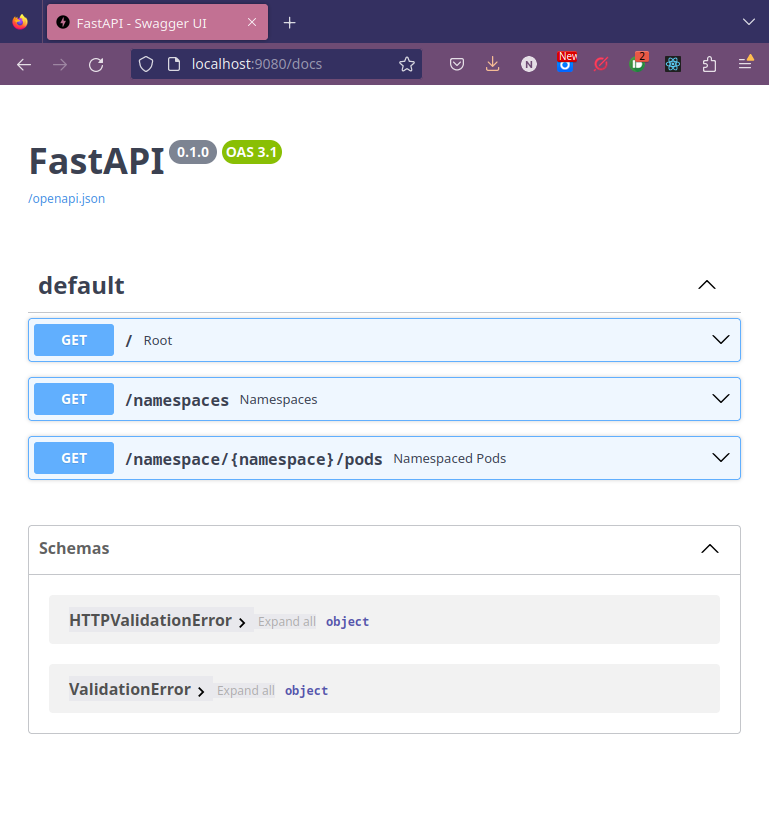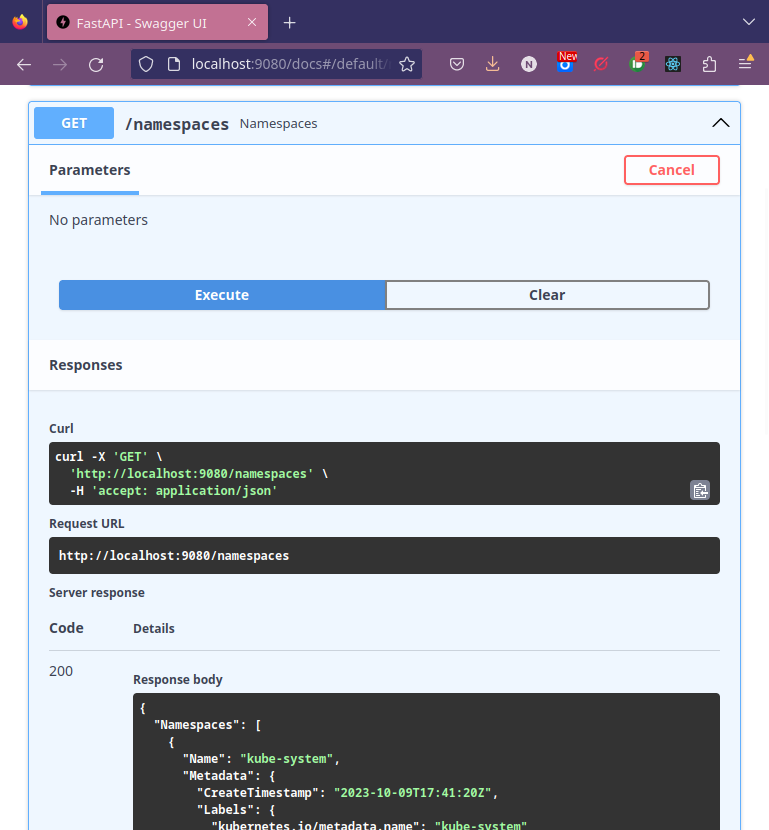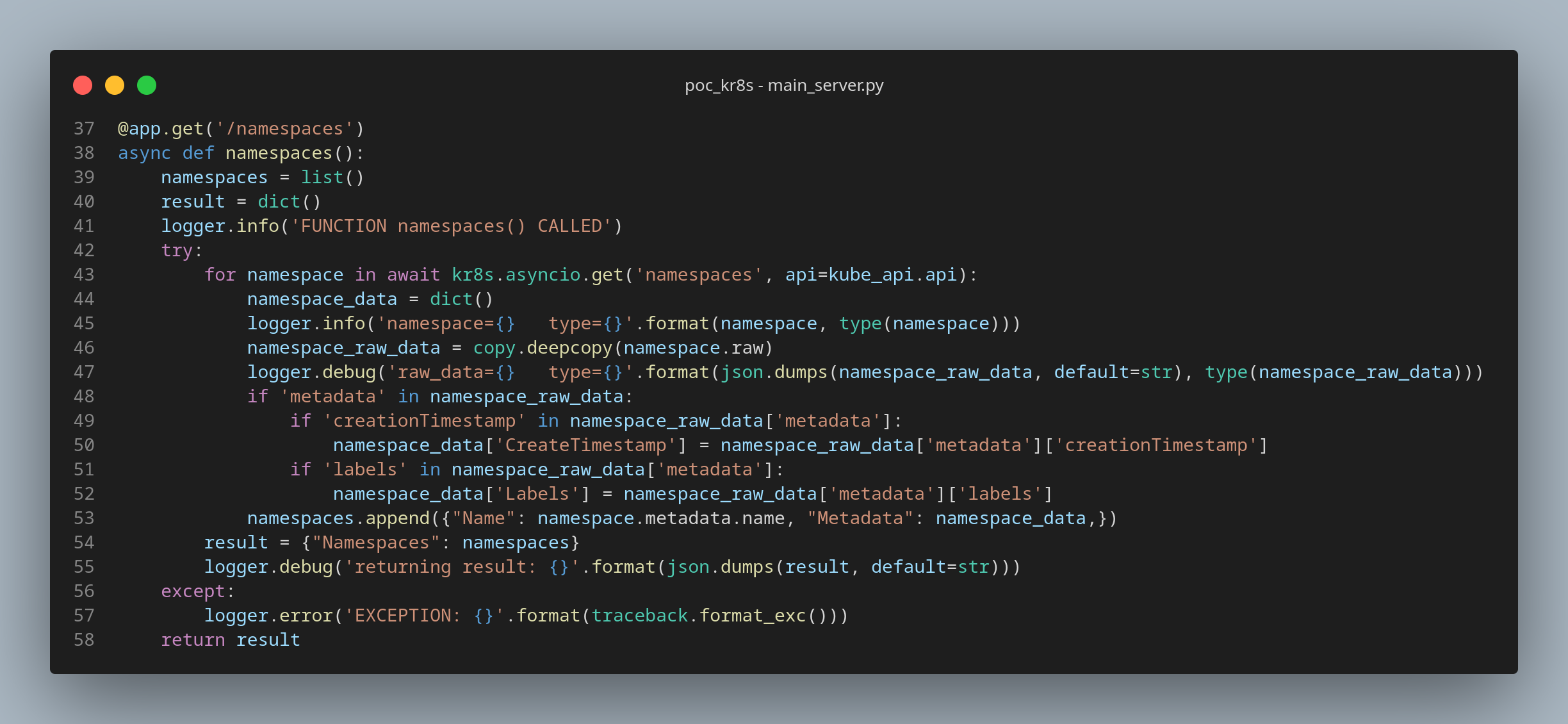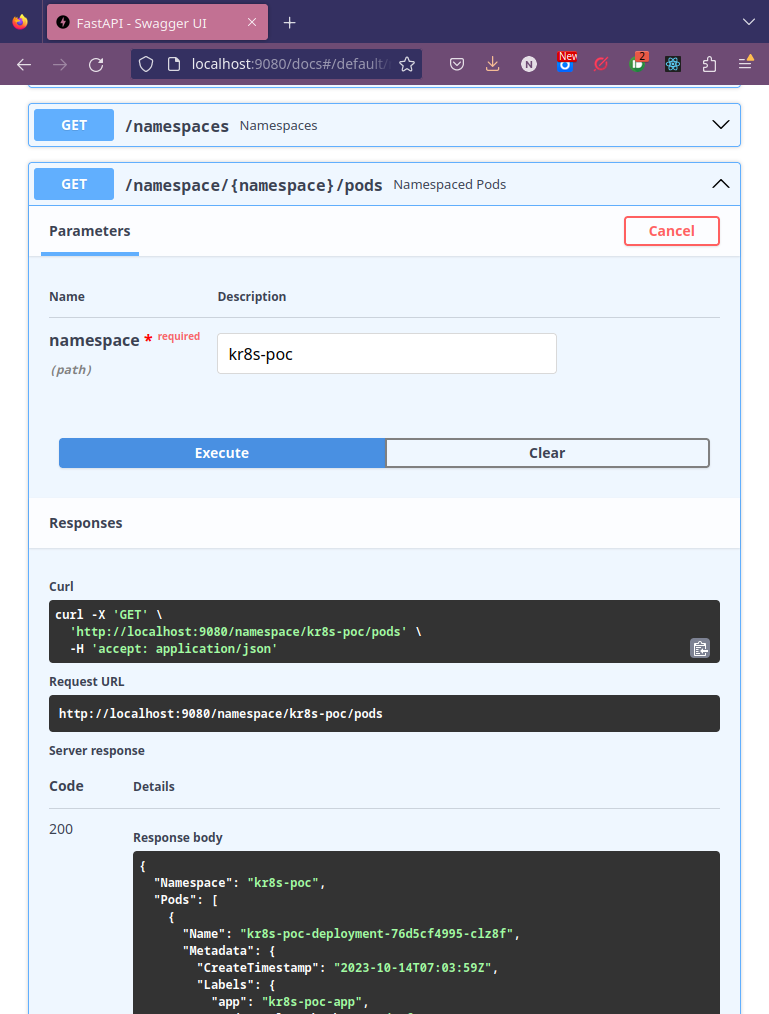An easier way to use Python in Kubernetes - a look at kr8s¶
It's always nice to discover a new tool that really make your life easier. I have looked around for an "easier" alternative to the Python Kubernetes Client library and I think I may just have found what I am looking for in the form of the kr8s project.
A very quick intro¶
As is more or less now my standard way to evaluate projects, I created a little proof of concept project to explore the basics.
Note My experimental code is in the GitHub project poc_kr8s - the examples I discuss and demonstrate here is based on this repository. More specifically, this blog post relates to version v0.0.21 of this repository.
I have made a number of observation document in the Git repository so I will not repeat them again here. In stead, I will just quickly give a more visual tour of what I found.
Lab Context¶
Obviously the experiment requires some Kubernetes environment. You can use basically any Kubernetes solution, but please note that at the time of the experiment Kubernetes was at version 1.27. These notes are also inn the repository.
From a use case perspective I thought it best to keep it simple and just retrieve namespaces and also information about pods in a chosen namespace using a REST API.
In the Python world, fastapi is these days basically the goto solution for developing REST API's in Python. Flask is also a very worthy alternative. Honestly I still find myself switching between the two. I always try to keep the external requirements to a minimum so my qualifying criteria is usually that if the project needs some kind of web page feature (other than a Swagger UI), Flask is my goto. But if it's purely REST API stuff, fastapi is really the best option in my opinion.
At the time of writing, the built Docker image for the project was also on Docker Hub, which means you could just deploy the supplied Kubernetes manifest and quickly see the demo in action. Keep in mind that far in the future, the API compatibility with newer Kubernetes version may break, so depending on when you use this example, you may have to rebuild the project and maybe even do minor tweaks in the code. Still - it should be minimal changes that is required. But if you do run into something - please consider creating a Pull Request or open an issue for me on this project site.
Demo¶
Once the deployment is running in Kubernetes, the easiest way to experiment will be via curl or using your web browser to navigate to the Swagger UI. In my lab environment I had to create a port forwarder to the demo pod using the following command:
kubectl port-forward kr8s-poc-deployment-76d5cf4995-clz8f -n kr8s-poc 9080:8080
I used port 9080 on my local machine, but of course you could use anything that works for you.
Below are some screenshots from the Swagger UI:
Navigating to the Swagger UI:

To get the list of namespaces, expand the blue strip that has the text /namespaces Namespaces and click the Try it out button. Next click the Execute button:

The code itself should be pretty straight forward. The real magic is only in a number of lines:

Some noteworthy lines to look at in more detail:
| Line # | Description / Explanation |
|---|---|
| 43 | The call to Kubernetes is done to retrieve the namespaces. Note that this is a asynchronous call. |
| 46 | For easier data transformation I converted the data object directly to a normal Python dictionary. I had to work on a copy of the data, else the fastapi framework would through an exception. |
Warning This is code for experimenting, hence the total lack of security, overkill on log statements as well as using pretty neutral variable names. On larger projects aimed to be used in production clusters you must pay a lot closer attention to these aspects. This code does not represent best practice, but rather just at functionally what to expect from a specific library - in this case
kr8s
The other endpoint works pretty much the same way, except now we are looking at a Pod from a specific namespace:

Note I have not yet tested the behavior on very large clusters with 100's or 1000's of namespaces, and therefore I cannot comment on speed or pagination of results yet.
Conclusion¶
I really enjoyed playing with kr8s and found it fairly easy to learn the library. I am sure it will also be a much easier way to start with this library as apposed to something like the more official Python Kubernetes Client.
While I explored kr8s I also got another change to play with fastapi and uviconr in a slightly different way to what I have used it up to now, and that was also a fairly nice experience.
These tools will definitely start to play a more prominent role in my day to day work with supporting and developing for Kubernetes.
Tags¶
kubernetes, python, fastapi, uvicorn